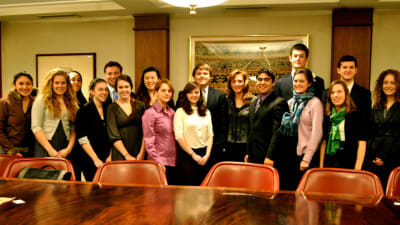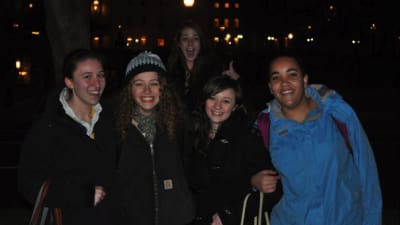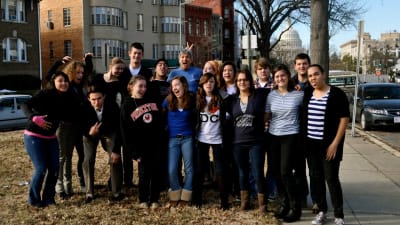Responding to Genocide: Experts meet with SEGL students
How do you respond to evil? This was the question students wrestled with as we tackled our latest case study on responding to genocide. The case study brought out strong feelings and also great hopefulness.
Our students began by watching the powerful PBS Frontline documentary “Ghosts of Rwanda,” which outlines the chilling course of the 1994 Rwandan genocide and the subsequent global response (or lack of response) to it. The initial student response was emotional: how could the world allow this to happen? The next day, students met with Carl Wilkens, a former aid worker whom the documentary featured as the only American to remain behind during the genocide. Wilkens now leads his own NGO, World Outside My Shoes, and his stories and reflections on the genocide were gripping. (At one point, for example, Wilkens saved an entire orphanage from being slaughtered by militia men with machetes.) He brought along Rebecca Davis, who started a dance company that allows survivors of genocide and other armed conflicts to rebuild communities through the arts. Davis gave students a helpful starting point for their social venture capstones (which students are already beginning to plan): “Ask yourself, ‘What am I best at?’ and ‘What do I want to change?’ Then create something that combines those two passions.”
Later in the case study, students met with Laura Lane, who is now the Senior Vice President for International Government Relations at Citigroup. In 1994, Lane chose differently in the face of the same ethical dilemma. Not only did she leave the country, but she was also in charge of evacuating all Americans in Rwanda. Lane spoke of her deep regret at not keeping the embassy open; students found her honest reflection (and the fact that she saved dozens of Rwandans during the evacuation) inspiring. She also spoke about her passion, post-Rwanda, for using microfinance to empower women in developing countries. After she spoke, her staff invited the students out onto the Citigroup terrace. The terrace is directly across from the Old Post Office Tower, with clear views of the Washington Monument, Capitol, and White House. The view and evening light provided a perfect setting for photographs.
How can the law respond to genocide and other war crimes? This was the next phase of our case study. Two visits to the American Society of International Law (ASIL) provided compelling answers to that question. We first met with Betsy Andersen, ASIL’s Executive Director, who (among other experiences) helped prosecute war criminals at the International Criminal Tribunal for the former Yugoslavia. She gave the students an overview of the international law system and facilitated a moot court exercise that pushed students to think and speak on their feet. Several days later, we returned to ASIL to speak with David Crane, who indicted African warlord and former Liberian President Charles Taylor for horrific war crimes. Crane’s incredible stories helped to illustrate how prosecutors gather evidence in order to make a case. Both speakers treated our students as they treat their own law school classes.
See below for the latest group of photographs.















